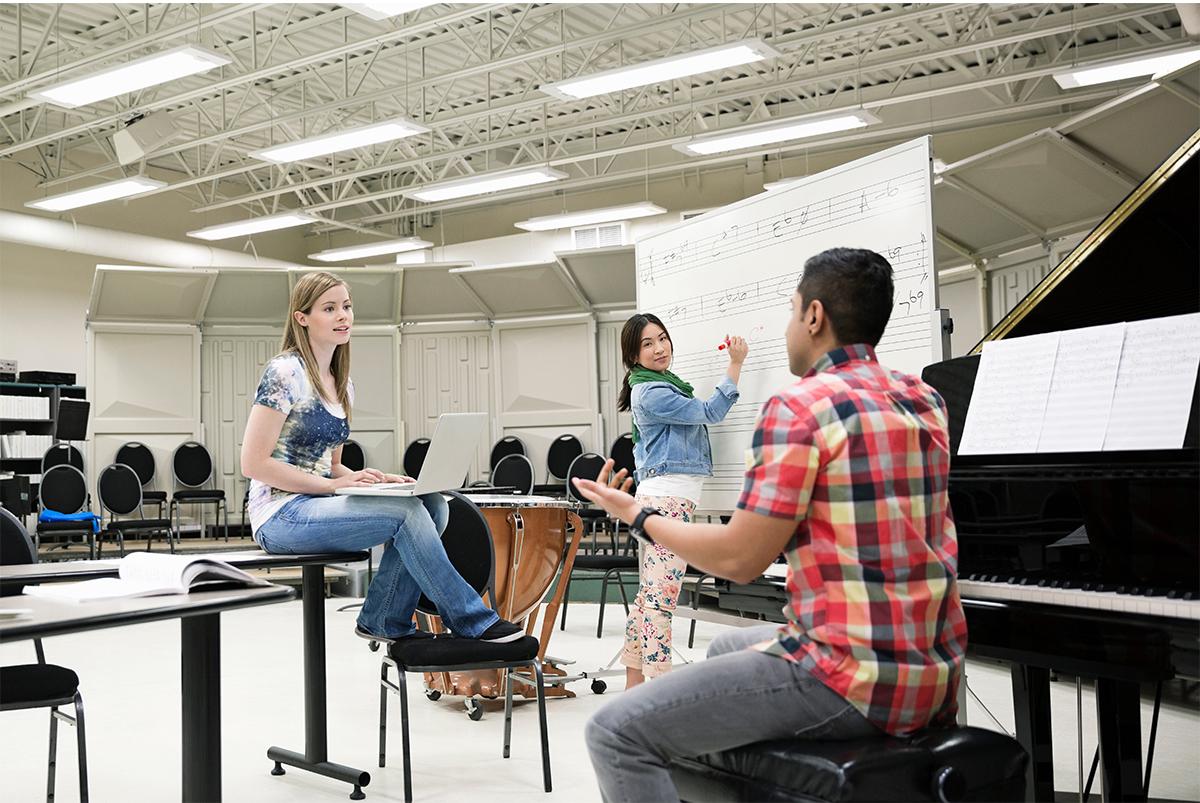
From Performer to Composer
Composition for Ensemble Students
Bach. Mozart. Beethoven. Brahms. All ensemble directors program masterworks to help form the backbone of technique and artistry. Most often, these works serve to help students meet National Core Arts Standards 4-6 in the Perform/Present/Produce domain. But what about the other standards in the Create, Respond, and Connect domains? This conversation with Darcie Pickering, Orchestra Director at Pearl River High School in New York, provides a model that can be adapted to fit any performance-oriented music class. By starting in the domains of Respond and Connect, focusing on Create, and circling back to Perform, students are guided to take ownership of their music making. Students in Darcie’s vibrant program have been recognized in numerous contests and festivals. In successful programs like hers, students connect to music and music-making on a personal level through multiple pathways. At Pearl River High School, orchestra students don’t just play music together—they create music on a routine basis. Noteflight Learn is Darcie’s go-to notation program, but the instructional ideas here can be adapted to other online notation software, including Flat for Education.
Darcie Pickering regularly creates activity templates for her students to work on, such as rhythmic or melodic exercises, which they can use to practice their skills or as prompts for composing. These templates are assigned and completed entirely online, making them a useful resource for quick "do-now" or exit ticket activities, or even last-minute substitute plans. In addition to using these templates with her students, Pickering also uses notation software, such as Noteflight Learn, to customize arrangements for her students. She encourages her students to do the same and provides them with the tools and resources they need to succeed, including the ability to export their arrangements from Noteflight as MusicXML files and import them into PracticeFirst for independent practice. With this platform, students can adjust the tempo as needed and receive immediate, detailed feedback on their intonation and rhythm. When they submit their recordings, all of this feedback is provided to Pickering in the form of an audio or video recording. This process works well with other online notation software, such as Flat for Education.
Pickering had her students work on a composition inspired by the Bach/Gounod "Ave Maria" because it offered a great parallel to the mash-ups commonly heard in contemporary pop and hip-hop. Before beginning the project, the students read about J.S. Bach, The Well-Tempered Clavier, and Charles Gounod, and watched a video of Yoyo Ma and Kathryn Stott performing the "Ave Maria." They then answered questions designed to help them respond to and connect with the music, such as whether they had heard Bach's "Prelude in C" before, how they would describe Gounod's melody (in this case, played on the cello), and why they thought the two compositions worked well together.
Pickering prepared for the project by creating an activity template in Noteflight Learn using Bach's "Prelude in C." She entered the notes manually and set up the template in a way that would be helpful for her students. For example, she repeated the first four measures to serve as an introduction, giving the students time to start recording and then begin playing. She made the notes in the introduction appear in red and added a message reminding students to "STOP! DON'T PLAY/COMPOSE HERE!" Above the Bach keyboard part, she added a blank staff for students to use for their own compositions, which they could change to a violin, viola, cello, or bass part. She encouraged her students to experiment by playing along with the keyboard part before inputting their own notes on the blank staff. The chordal framework of the keyboard part provided a helpful scaffold for students to get started. Once the template was set up, Pickering shared it with her class.
Some of the student-composed melodies were simple, primarily consisting of whole, half, and quarter notes, while other compositions were more rhythmically complex. She was impressed by all of her students' submissions, and especially enjoyed reading the students' reactions to the Yo-Yo Ma performance and their reflections on the project. When they did this project in January of 2022, all of Pickering's students were attending classes remotely, and even the most dedicated students were showing signs of waning interest, but this project renewed their enthusiasm.